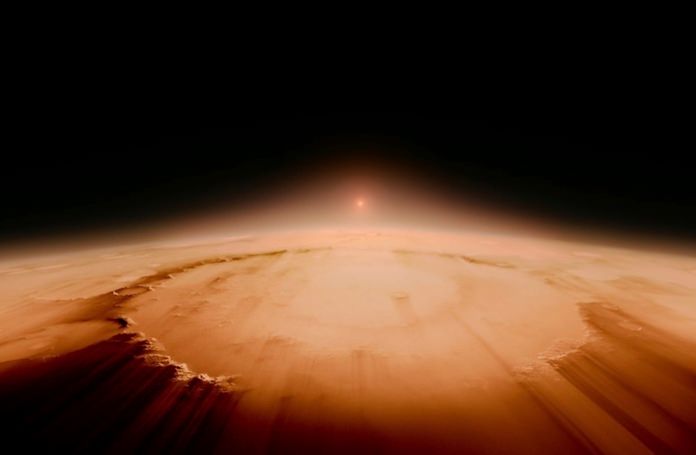Los Angeles (AP) – About 20 years ago, Andrew Knoll, a professor of natural history and NASA consultant, was sitting in his office at Harvard when he got a strange phone call.

“The person on the other end of the line said, ‘My name is Terry Malick. I’m interested in making a film about the history of life. I’m going to be in Cambridge next month. Could we have lunch?” Knoll recalls. “I must admit, it was probably halfway through lunch when it just dawned on me: ‘Hey, this guy made “Badlands.’’’”
Malick, who never does interviews or public appearances, is perhaps the movies’ most secretive filmmaker and for years, the project was the subject of whispers and rumor. Meanwhile, as he was churning out films like “The Tree of Life” and “The Thin Red Line,” Malick was quietly and persistently pursuing a long-held dream of seemingly impossible ambition: to make a movie about life as we know it.
Now viewers of Malick’s “Voyage of Time”, set to land in IMAX theaters this month, will find a film of vast majesty that welcomes all comers with open arms. The movie goes so far as to include yourself, whenever you examine a little rock, or a leaf. You and they, as you will see, belong to the same story.”
For a filmmaker who has always been animated by a profound and inexhaustible sense of wonder, “Voyage of Time” is perhaps Malick distilled down to his essence. There’s no story except for the elemental marveling and metaphysical quest that make the backbone of the director’s other films. (“The Tree of Life” memorably widened its scope of a Texas family to include the universe and dinosaurs.)
The film’s basis is in science (Knoll served as chief science adviser) but it’s told with a poetic rapture at the miracles and mysteries of life. The 45-minute film, narrated by Brad Pitt, travels from the Big Bang to today, merging the personal with the universal, filled with awe for “every atom, every particle blazing.”
The film was made with a mix of shooting around the globe with IMAX cameras, footage gleaned from the Hubble telescope, re-creations and a sizable amount of digital effects of prehistoric times that were overseen by Dan Glass (“The Matrix,” ‘’Batman Begins”). Malick occasionally met with Knoll and other scientists to go over the chronology and evolutions.
“It’s this history and theoretical future seen through the eyes of one of our greatest artists,” says Sarah Green, a regular producer of Malick’s. “I think it can play day and night, absolutely. We have a G rating. There’s nobody who can be kept out of it. But there’s obviously some very mature thinking.”
A 90-minute version narrated by Cate Blanchett where the journey is a little less guided will also be released sometime next year. But “Voyage of Time: The IMAX Experience” will play like a science documentary in IMAX’s museum network, in aquariums and science centers.
Malick’s film had been a known project for years at IMAX but it wasn’t until a few years ago that it began coming together. Greg Foster, chief executive of IMAX, had been interested in finding new life in the exhibitor’s legacy business of nature documentaries through less traditional films. After a call from Malick, he flew out to meet him in Austin, Texas, and see the movie.
“I won’t pretend, there aren’t some bucket-list realities to this. There aren’t a lot of opportunities to work with Terrence Malick. He doesn’t make a lot of movies,” says Foster. “And when he does, and he makes one that’s designed for our format, you have to ask yourself if it’s too good to be true.”
The film will remain in IMAX theaters for months if not years.
“It’s not going to change much over the next 30 years in terms of the world,” says Foster. “It’s the kind of thing that’s going to stick around. We won’t know how this movie is doing for six months.”
Like most of Malick’s movies, “Voyage of Time” is as lofty as it is basic, immense as it is intimate, spiritual as it is scientific. When preparing the film, Malick shared with producers an Albert Einstein quotation that guided the entire enterprise:
“The most beautiful thing we can experience is the mysterious. It is the source of all true art and science. He to whom the emotion is a stranger, who can no longer pause to wonder and stand wrapped in awe, is as good as dead – his eyes are closed.”




